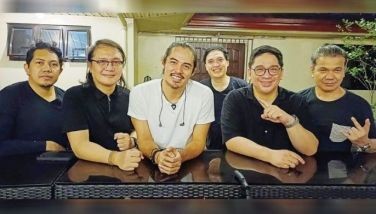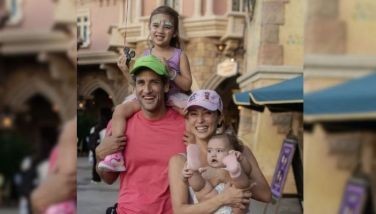Villancicos at San Agustin
I have never been to a villancico concert and it has been ages since I had heard a villancico. There must have been one or two performed in some Christmas concerts but those instances were too few and far between to be really remembered. What I vividly recall regarding villancicos comes from long ago.
That was when I was a girl in school. In the weeks leading up to Christmas vacation, the nuns would herd us girls to the salon to teach us villancicos. That was where I learned Pastores a Belen, coremos en tropel or whatever. These would later be performed in the annual Christmas program.
We would learn only one song per year but I can still remember how happy the sisters seemed while teaching us the songs. Maybe hearing them brought back memories of Christmastime in their hometowns in Spain. Maybe it gave them joy to know that there might be among us kids somebody who would remember those songs and teach them to others later on.
I did not. Neither did anybody from my class. But I will get the chance to hear Pastores a Belen sang again at the historic San Agustin in Intramuros, Manila. The beautifully preserved church will be the venue for one the most special Christmas presentations of the year. This is Villancicos Ng Paskong Pilipino, a concert featuring Spanish and Filipino villancicos, which will be held at the San Agustin on Tuesday, Dec. 6 at 7:30 in the evening. And how nice for everybody interested as admission is free.
The villancico is an Iberian music form that dates back to the 15th century. As time passed and music tastes evolved, it came to be associated mostly with the Christmas celebration. I believe that while the likes of Silent Night has roots in Western church music and What Child Is This in medieval lays, the lilting beat of Jingle Bells and Sleighride was influenced by the villancico.
 Tiples de Santo Domingo and the Santo Domingo Male Chorale
Tiples de Santo Domingo and the Santo Domingo Male Chorale This is not really surprising as Spain and Portugal colonized many parts of the world. The first music teachers in those places were members of religious orders from Spain and Portugal. They taught church music and on Christmastime, they definitely sang lots of villancicos. This is also the reason why there were Filipino composers who wrote villancicos in the native dialects.
Ang Pasko Ay Sumapit originally by Vicente Rubi in Cebuano and later given Tagalog lyrics by Levi Celerio is one example. So is Felipe de Leon’s Pasko Na Naman and Mano Po Ninong. I also think that Ryan Cayabyab was thinking of the villancico when he composed his Kumukutikutitap.
Others of unknown origins and dating back to the 19th century were found a few years ago in the archives of the Church of St. Claire in Quezon City. These were originally in the Monasterio de Santa Clara in Intramuros before it was destroyed during World War II. Back in those days, it is said that Manilans would troop to Santa Clara for Misa de Gallo to listen to the heavenly sound of the cloistered nuns singing those beautiful songs.
Four of these villancicos El Rey de los Cielos, Ea Pastores, Venid Gentes and O Grande Misterio will be performed for the first time in public after 70 years in the San Agustin concert. Performers are the Tiples de Santo Domingo and the Santo Domingo Male Chorale conducted by Eugene de los Santos and the Novo Concertante Manila with Arwin Tan as conductor.
The organizers of Villancicos Ng Paskong Pilipino are hopeful that this event will create awareness about the Filipino villancico heritage. Few of us have memories of those times but maybe it will also introduce us to our Christmas celebrations in the Spanish era. That was where we got our Misa de Gallo, our penchant for having queso de bola and hamon and for Los Tres Reyes Magos. This means we have the longest Christmas season in the world because we will only put an end to it on the Feast of the Three Kings that we insist is still on Jan. 6.
The program also includes the traditional Nacio Nacio Pastores, a Villancico from Calahorra; Villancico A Pastores de Belen by Marcelo Adonay; Pastorale by Johann Sebastian Bach featuring Alejandro Consolacion II on the organ. Villancico Pilipino, La Virgen Lava Panales, Que Tranquilla esta la noche and Silencio pastores by Rosalina Abejo featuring soprano Thea Perez; Payapang Daigdig by Felipe de Leon; the traditional Noong Araw Ng Pasko and Noche Buena; Simbang Gabi by Lucio San Pedro; Pasko Na Naman by Felipe de Leon; and Ang Pasko ay Sumapit with Consolacion on the organ.
- Latest
- Trending































